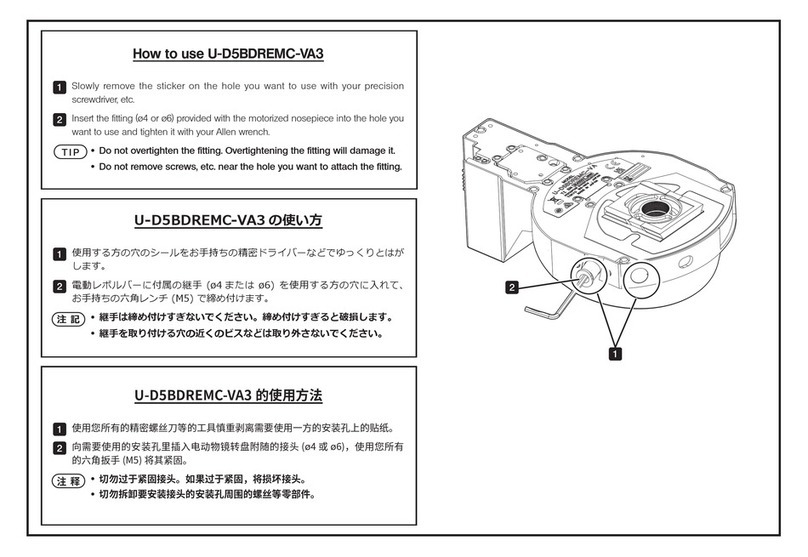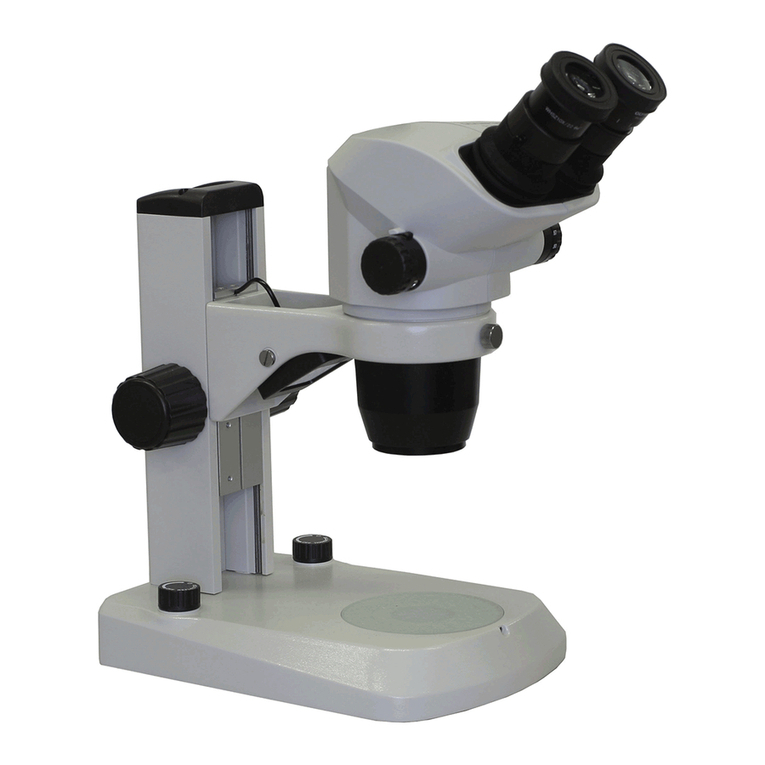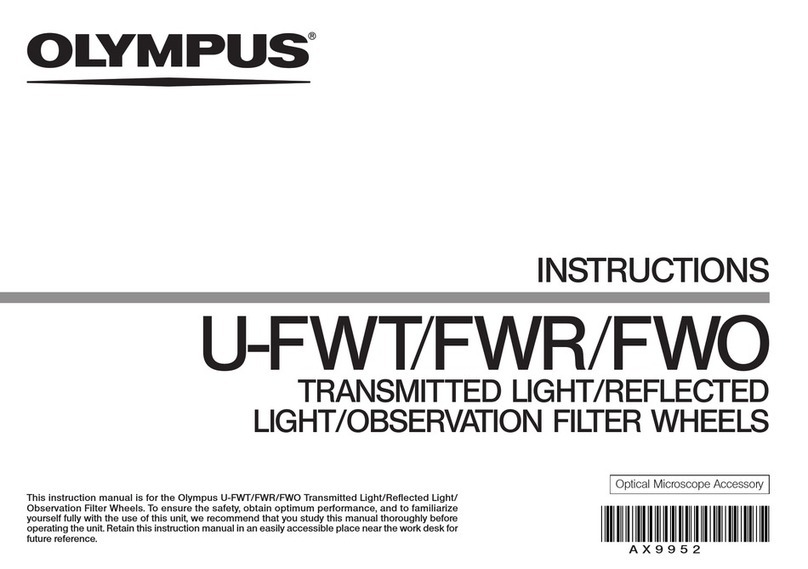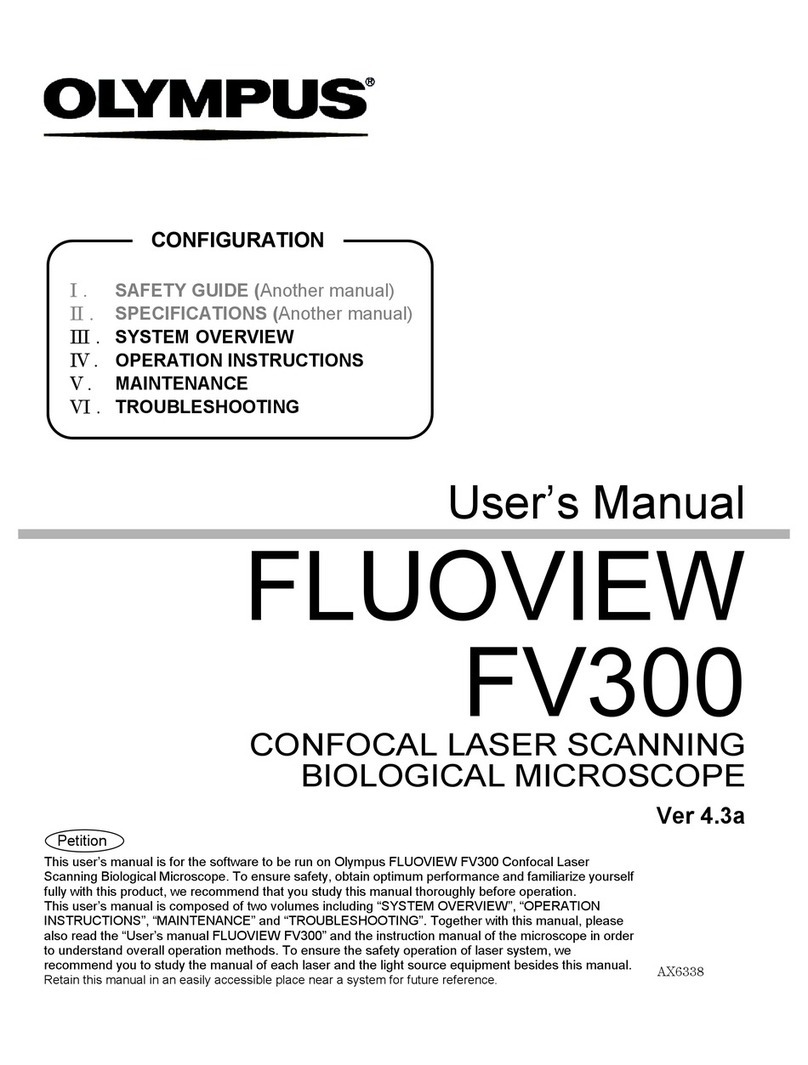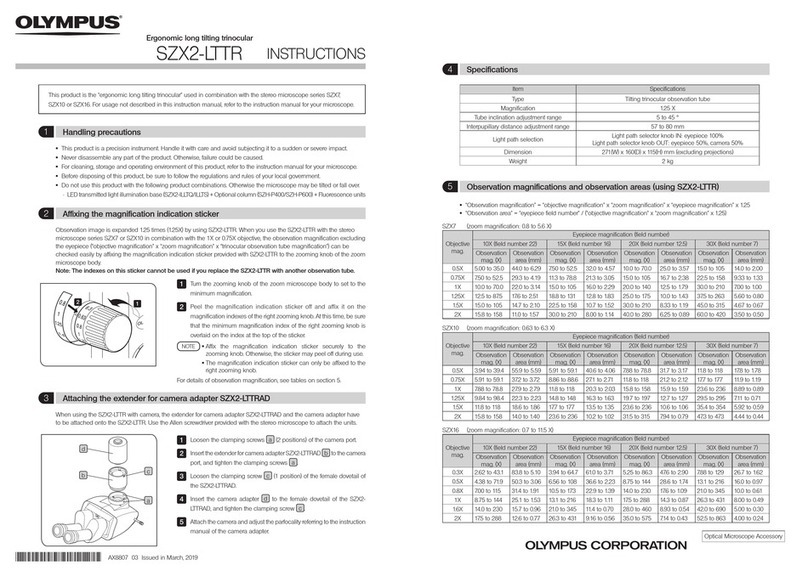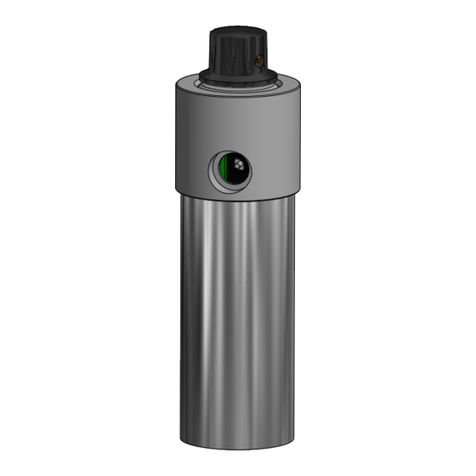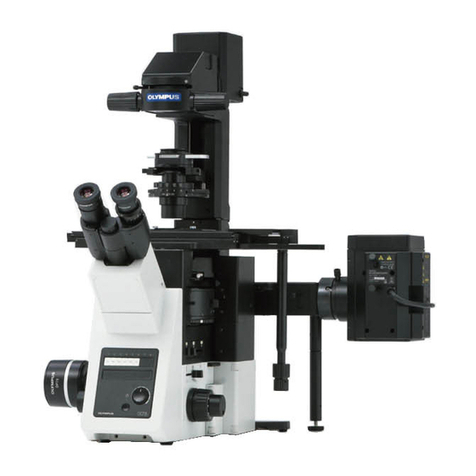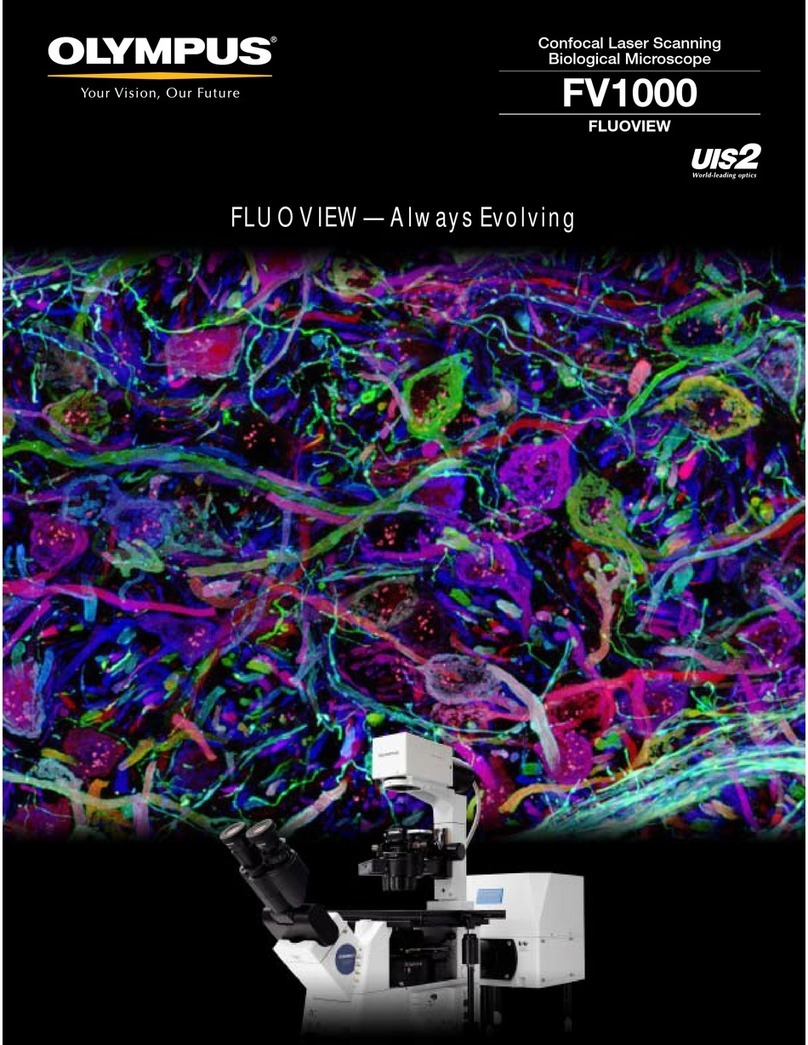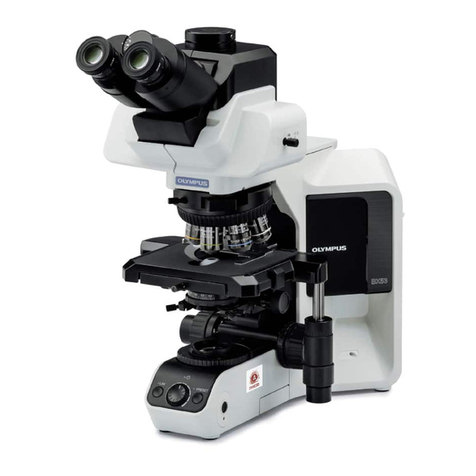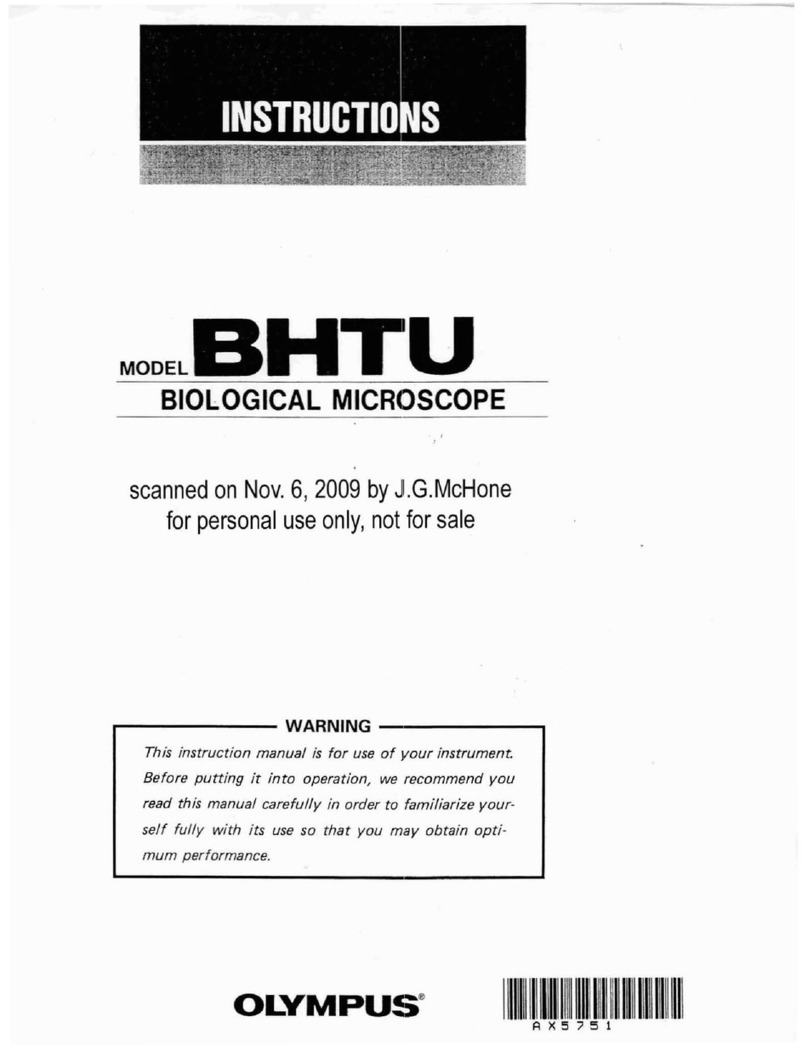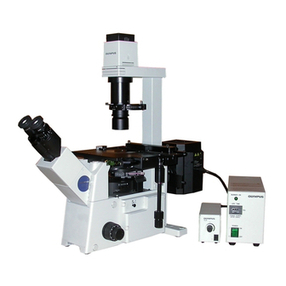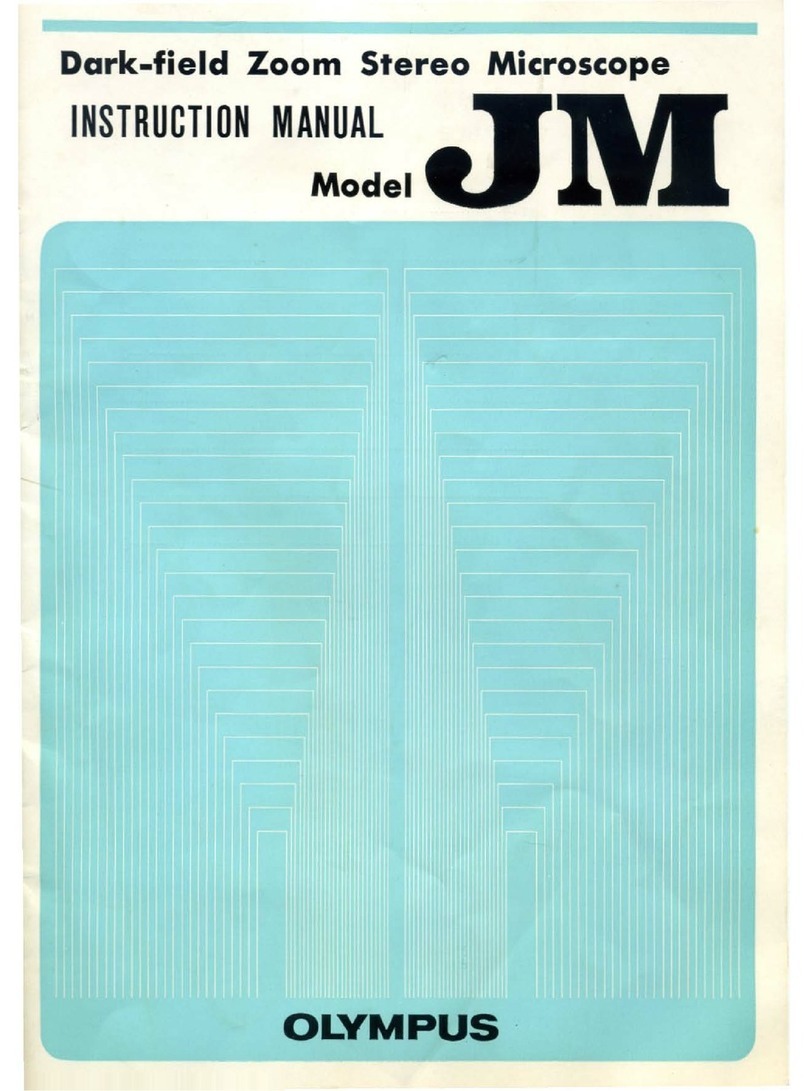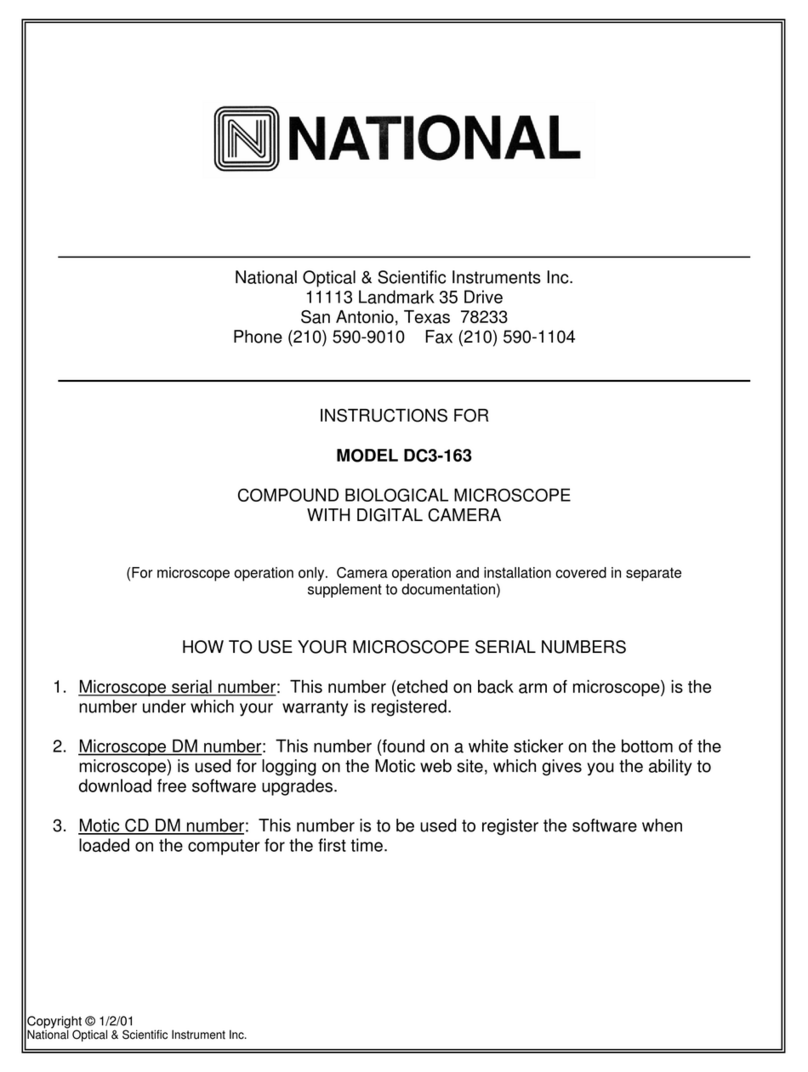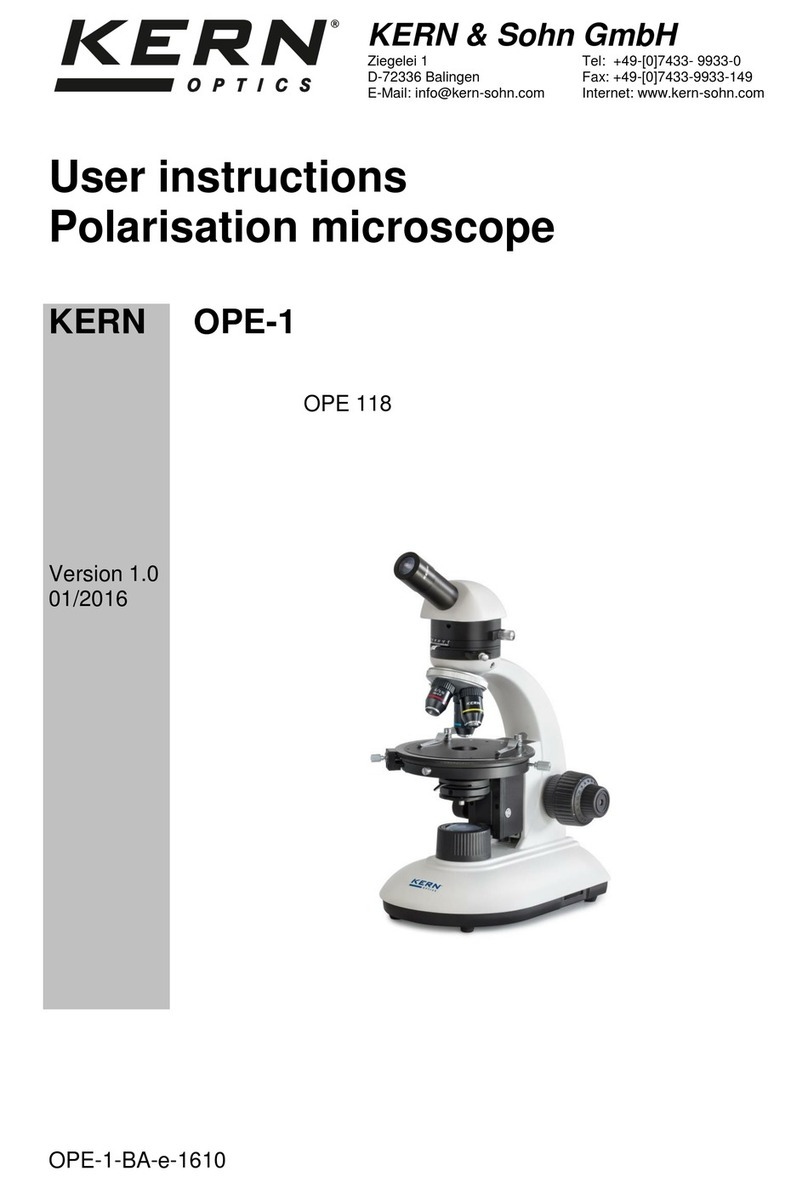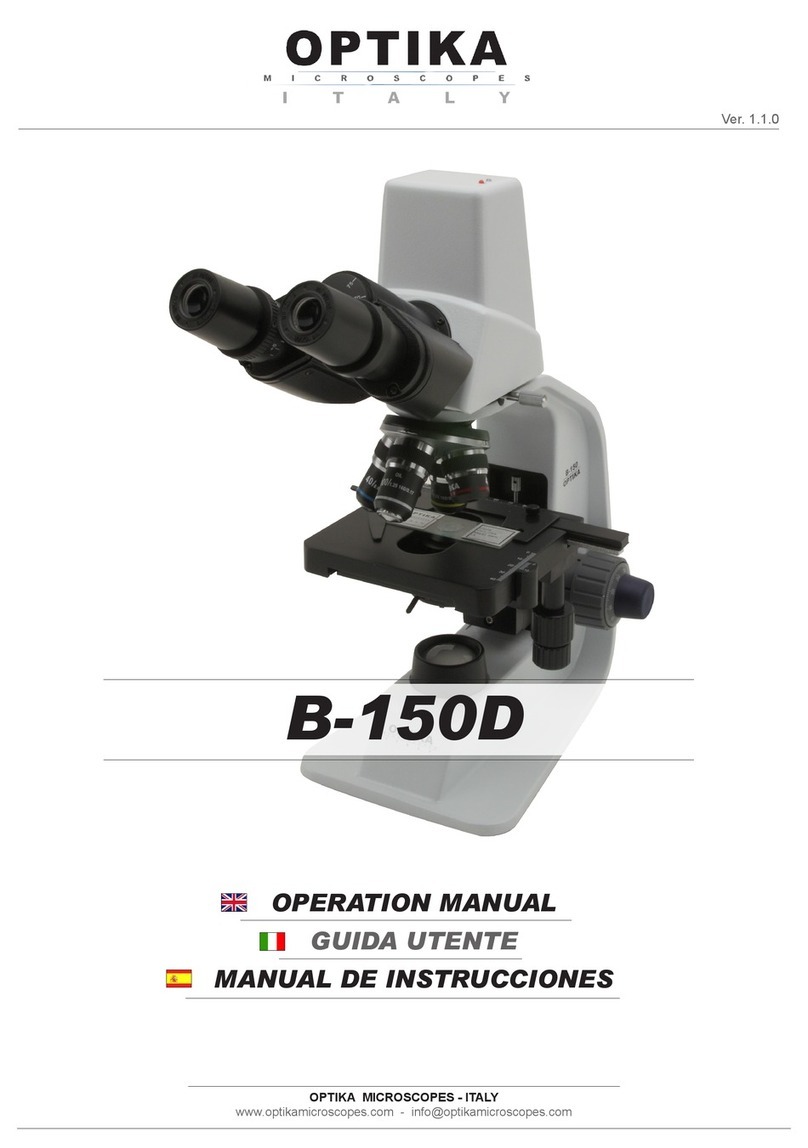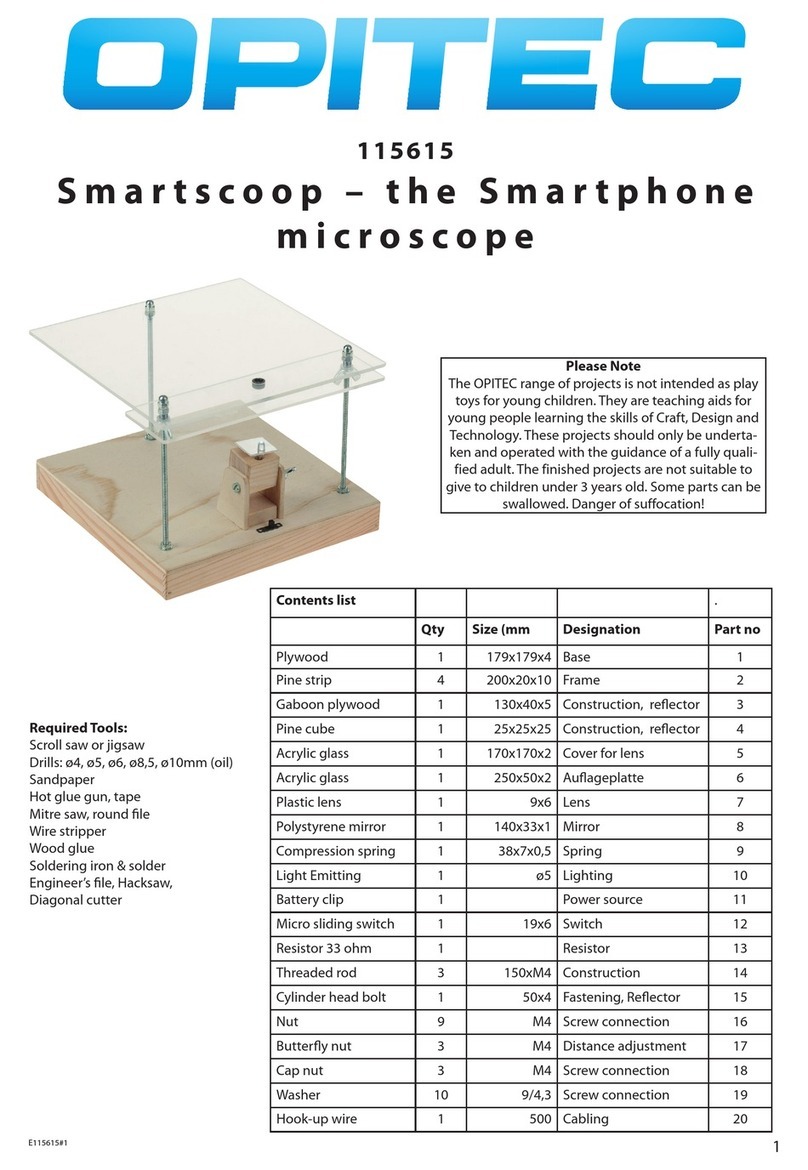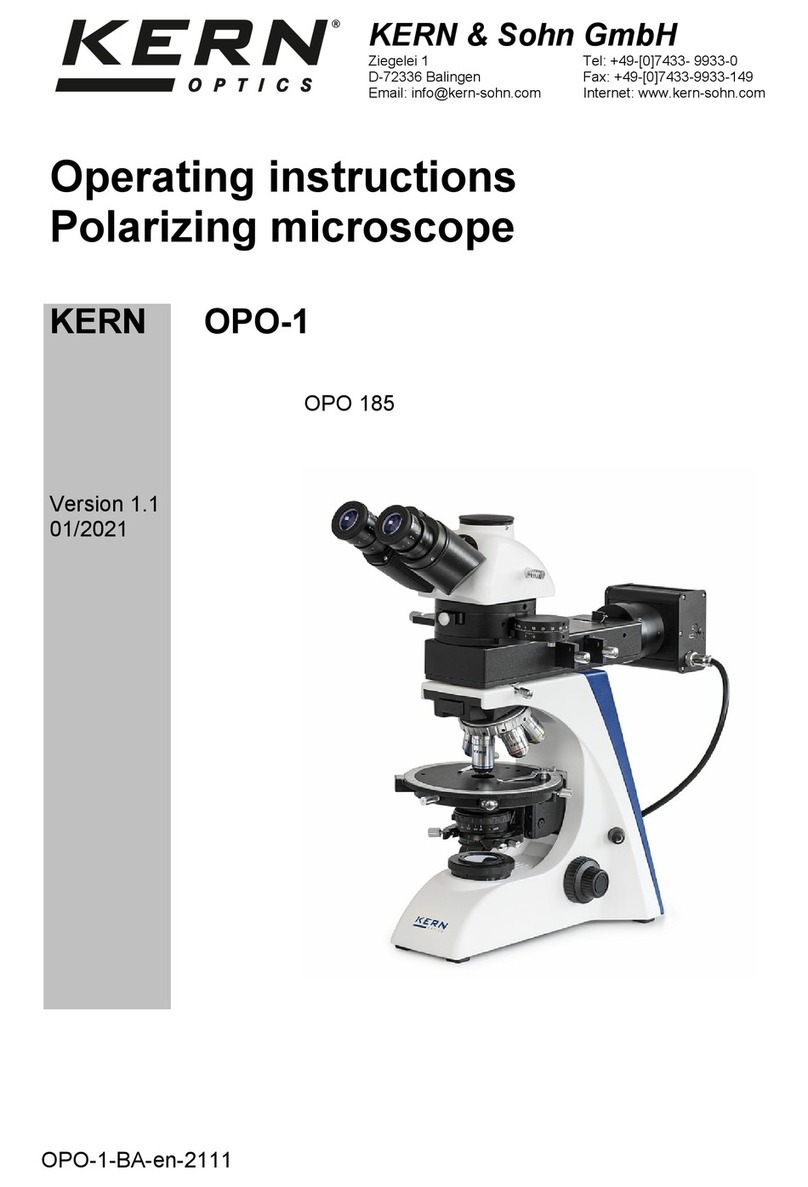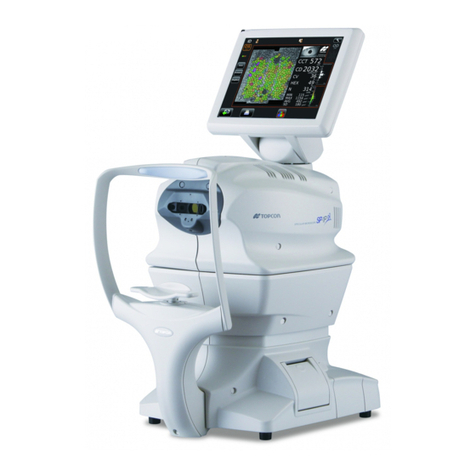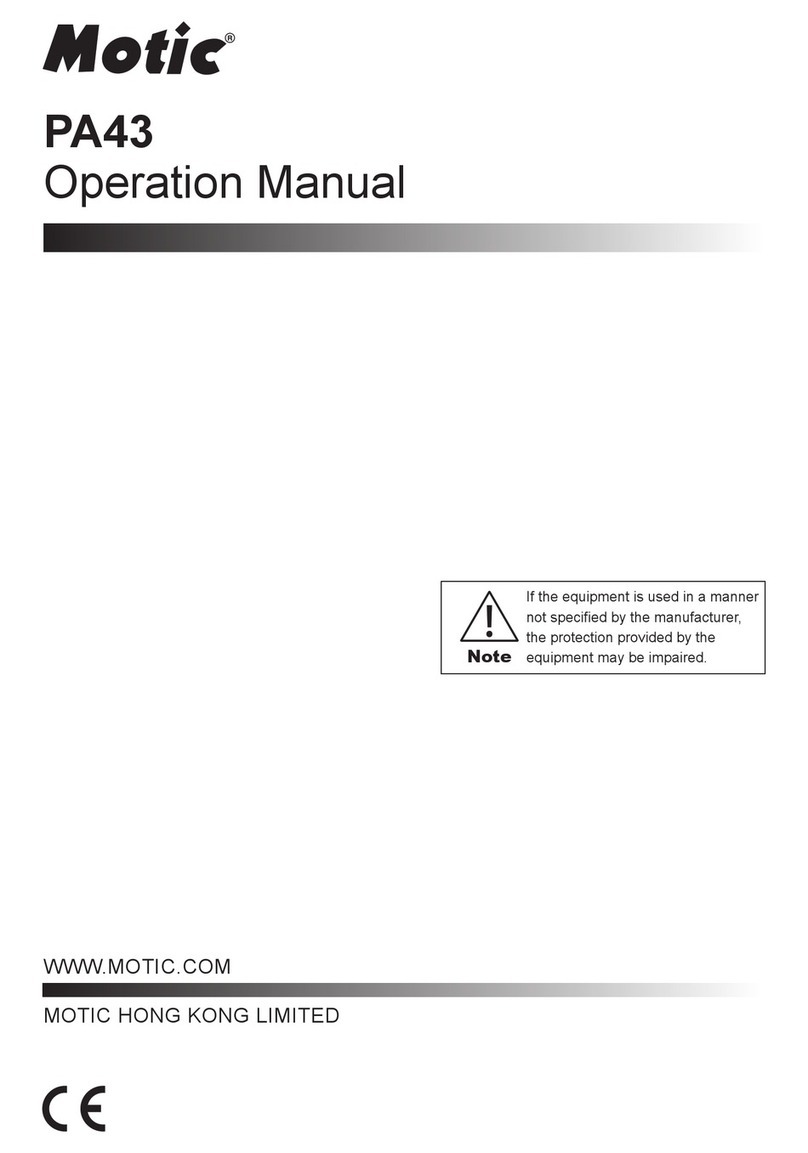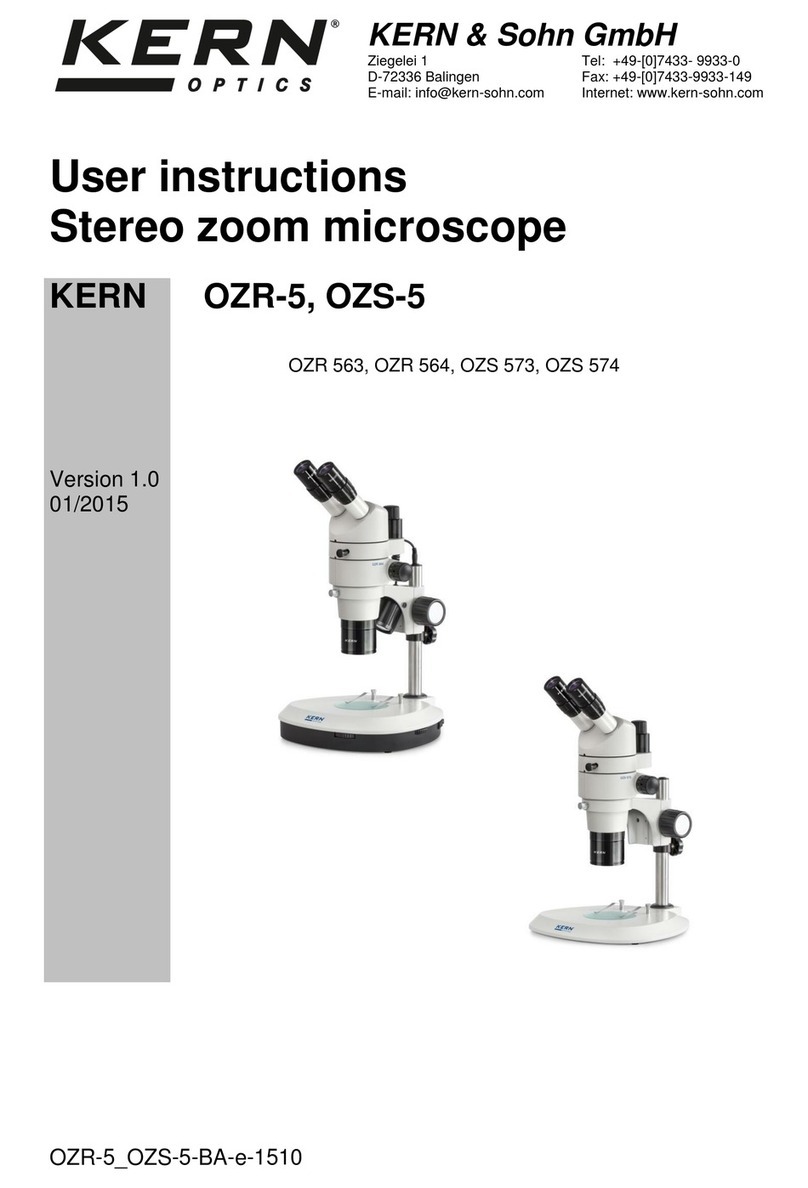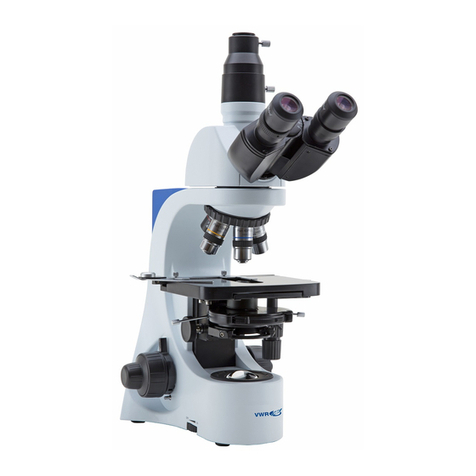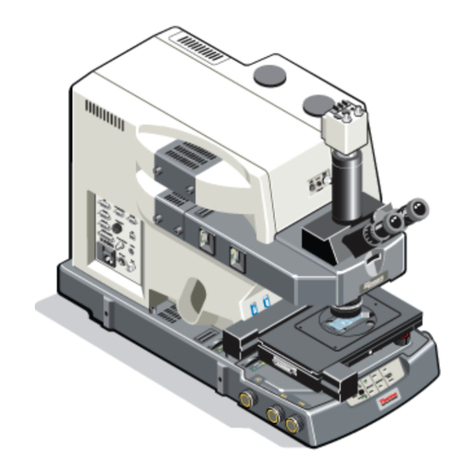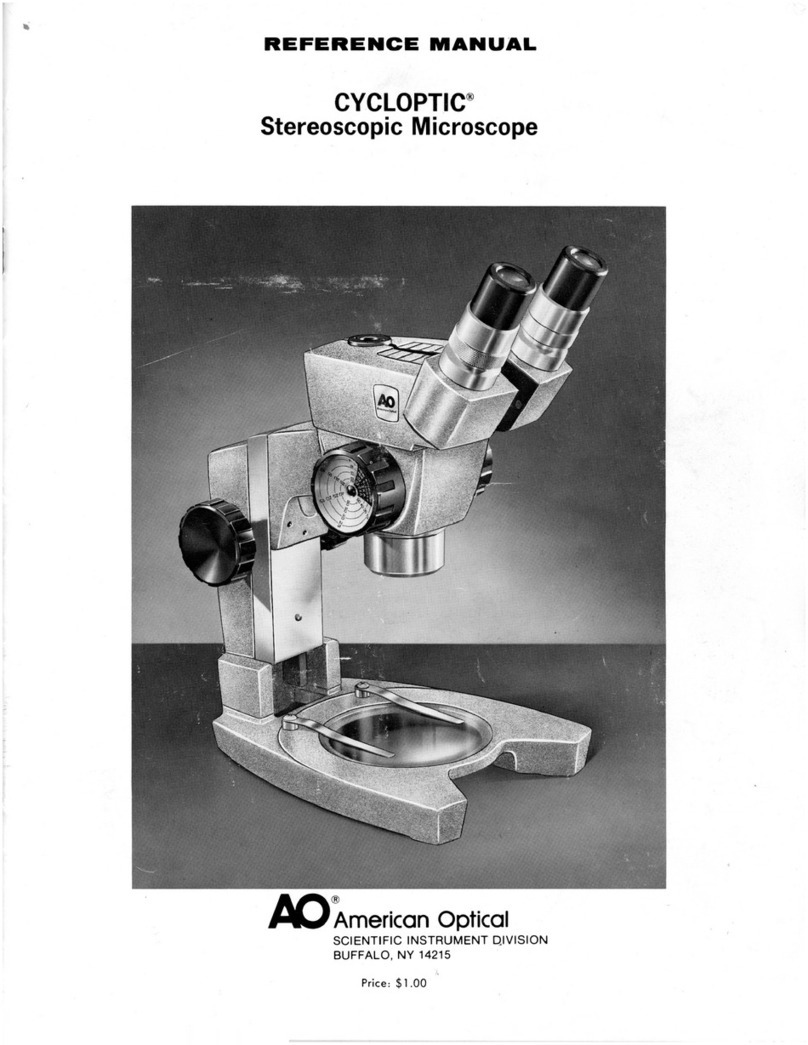1211
Water immersion DIC condenser IX2-DICD + water immersion
top lens IX2-TLW
IX2-GS
High performance DIC condenser designed
for excellent optical performance and
specimen access in high magnification
observations. Designed for specimen
access, all controls are front mounted
including prism exchange and aperture
control. Three high numerical aperture top
lenses are available including the water
immersion IX2-TLW that offers 0.9 N.A.
with 3.7 mm of working distance and a 40°
approach angle for micro manipulations.
40°
This is the condenser adapter for upright
microscope condensers on the IX2,
including the 8-position turret condenser
(U-UCD8-2) for maximum system flexibility.
This combination allows the use of various
optional element with high N.A., just
rotating the smooth turret for switching
them easily. The IX2 illumination pillar also
offers a 'condenser-only' tilt mechanism to
quickly allow access to the
specimen without tilting
the entire illumination pillar.
* IX2-TLW cannot be used for U-UCD8-2
The Gliding Stage was designed for quick
rotation of the specimen using your
fingertips. With 20 mm of X-Y travel,
360 degree rotation and completely flat
surface, a specimen such as the nematode
worm C. elegans can be quickly brought into
the correct position and alignment for
injection or micromanipulations.
Nomarski DIC system offers the choice of optimal resolution or
high contrast in live cell observation.
Live cells specimens vary in thickness from from that of a nematode
worm such as C. elegans to a monolayer of cultured cells. The
requirements for DIC are also varied according to the specimen
from thinner cells being almost invisible to thicker specimens having
a lot of inherent contrast. Olympus provides three DIC systems with
varying amounts of shear. Small shear, high resolution sets are
excellent for thicker specimens. High contrast prism with twice the
normal shear are excellent for very thin specimens.
■Comparison of thick specimen (C. elegans), showing differences in shearing value
■Comparison of thin specimen, showing differences in shearing value
■ HR/HC optical elements for IX2-LWUCD
and applicable objectives
■ General type optical elements for
IX2-LWUCD and applicable objectives
■Selecting the optimum DIC prism optimum for specimen
thickness and objective magnification
■ DIC sliders
DIC observation using U-DICTHR
Shift DIC sliders for transmitted light/
U-DICTS
DIC sliders for transmitted light/U-DICT
High contrast DIC slider for transmitted
light/U-DICTHC
High resolution DIC slider for transmitted
light/U-DICTHR
DIC observation using U-DICT/ U-DICTS
DIC observation using U-DICTHC DIC observation using U-DICT/ U-DICTS
Thin specimen
(Big shearing value)
Thick specimen
(Small shearing value) 10X 40X 100X
U-DICTHC
for superior contrast with thin specimen
observation
U-DICTHR
for superior resolution with thick specimen
observation
U-DICT, U-DICTS
for general observation
• New DIC system gives a wider choice
UIS2 expands the selection of DIC
applicable objectives. Each condenser
prism is compatible with more lenses
making setup and configuration easier.
Differential Interference Contrast
DIC
DIC
Long working distance universal condenser/IX2-LWUCD
Water immersion DIC condenser/IX2-DICD
Condenser adapter/IX-ADUCD
Gliding stage/IX2-GS
Combining a long working distance (27 mm) and a high numerical
aperture (N.A. 0.55), the LWUCD condenser accommodates most
incubation chambers and T-Flasks. The 5-position turret provides
versatility with DIC or phase inserts. DIC components are specially
designed to obtain high-contrast, high-resolution images with 20X
and 40X objectives.
Polarizer
Condenser
Specimen
Objective
DIC prism
Analyzer
DIC prism
Shearing value
■Simple principle of Nomarski DIC
microscopy
Nomarski DIC amplifies contrast by using the
phase difference which occurs when light
passes through material with different
refraction or thickness value (e.g. a cell) in a
particular medium (e.g. water). The wave
direction of light from the microscope light
source is unified in a polarizer (condenser
side); and when it passes through the
condenser side DIC prism, it separates into
two beams which cross each other at right
angles. The distance of separation is called
the shearing amount. When two such
separated beams pass through a medium
with different refraction values (e.g. a cell), one
of them is delayed; and when the two beams
are re-composed by DIC prism (the observa-
tion side) and pass through the analyzer, the
interference effect produces the contrast.
This is the principle of Nomarski DIC.
Olympus has developed the most suitable
DIC prisms for different types of specimen,
based on the shearing amount. When DIC
contrast is low, the specimen is hard to
observe, while high contrast also hinders
observation because of excessive glare.
Olympus has therefore developed three
different types of DIC prisms to ensure clear
observation for every kind of specimen.
New DIC system
DIC elements Applicable objectives
IX2-DIC20HR UPLSAPO20X
IX2-DIC20HC UPLFLN20X
LUCPLFLN20X
IX2-DIC40HR UPLSAPO40X2
IX2-DIC40HC UPLFLN40X
UPLFLN40XO
LUCPLFLN40X
DIC elements Applicable objectives
IX2-DIC10 UPLSAPO10X2
UPLFLN10X2
IX2-DIC20 UPLSAPO20X
UPLFLN20X
LUCPLFLN20X
IX2-DIC40 UPLSAPO40X2
UPLFLN40X
UPLFLN40XO
LUCPLFLN40X
IX2-DIC60 PLAPON60XO
UPLFLN60X
UPLFLN60XOI
LUCPLFLN60X
IX2-DIC100 UPLSAPO100XO
UPLFLN100XO
UPLFLN100XOI
Numerical Aperture Working Distance Immersion
(N.A.) (W.D.)
IX2-TLW 0.9 3.7 mm Water
U-TLD 0.9 1.5 mm
U-TLO 1.4 0.63 mm Oil
■Top lens combination



